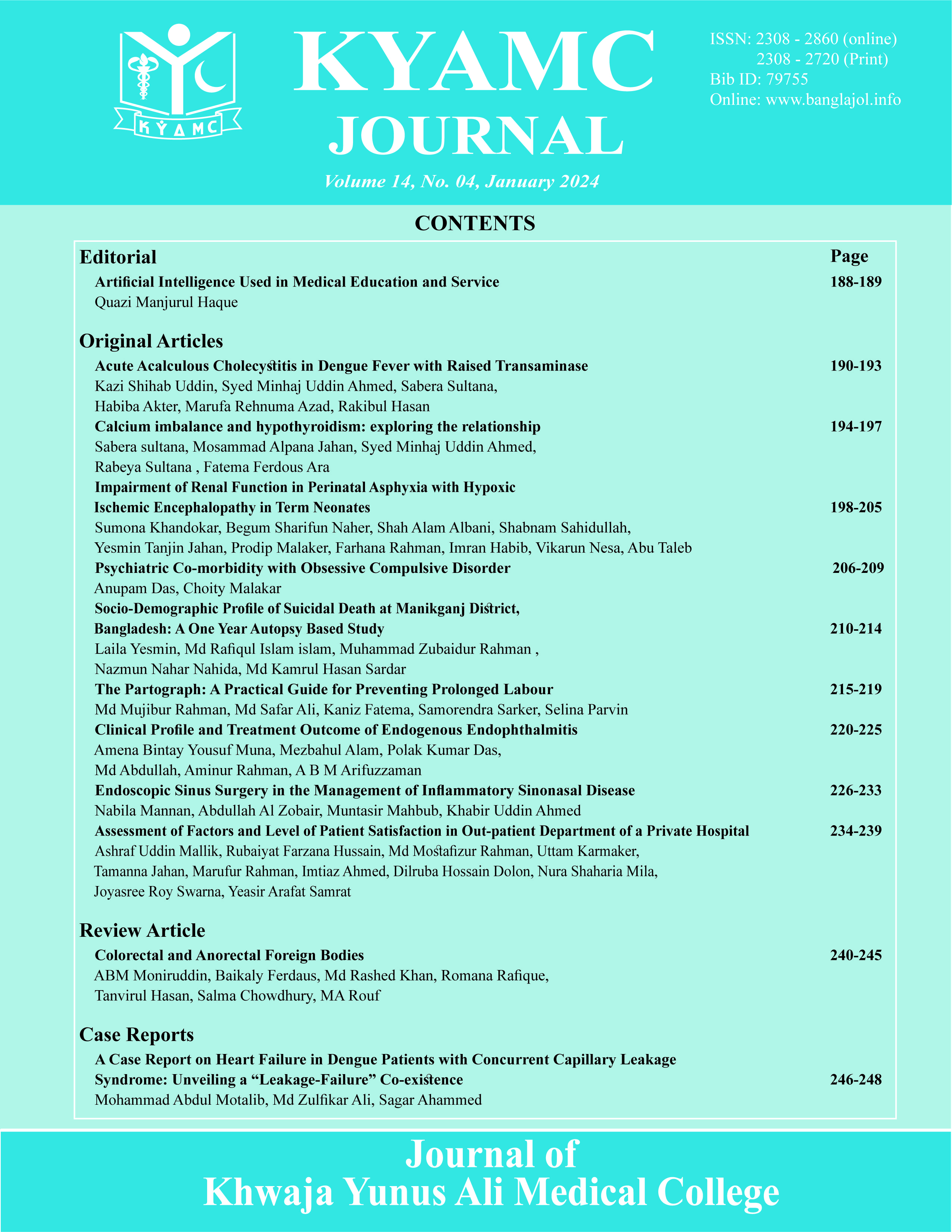The Partograph: A Practical Guide for Preventing Prolonged Labour
DOI:
https://doi.org/10.3329/kyamcj.v14i04.73109Keywords:
Partograph, Labour, Neonatal Outcome, Alert line, Primigravida, Mode of DeliveryAbstract
Background: The partograph, a graphic recording of labour and features in the mother and foetus has been used since 1970 to detect labour that is not progressing normally. The partograph serves early warning system and assist in early decision of transfer, augmentation and termination of labour. It also increases the quality and regularity of observing mother and foetus in labour.
Objectives: The study aimed to evaluate effect of using partograph on the management and outcome of labour.
Materials and Methods: It was a prospective cross-sectional observational study conducted in the Department of Obstetrics and Gynaecology at Sher-E-Bangla Medical College Hospital, Barishal; Bangladesh over one (1) year from January 2017 to December 2017. A total 280 patients were enrolled in this study. Plotting on the partograph was started at cervical dilation of 4 cm on alert line.
Results: The mean age of the participants was 23.4 ±4 years and mean gestational age was 38.3 ±1.74 weeks and 45% were primigravida. The mean Apgar score of the newborn after 5 minutes was 9.3 ±0.7. The mean duration for delivery on active labour was 4.3 ±2.5 hours in primigravida and 3.4 ±2.3 hours in multipara.
Conclusion: The proper use of partographs and the application of the right decision at the right time can be achieved the best for maternal and neonatal outcomes.
KYAMC Journal Volume: 14, No: 04, January 2024: 215-219.
Downloads
275
376
Downloads
Published
How to Cite
Issue
Section
License
Copyright (c) 2024 KYAMC Journal

This work is licensed under a Creative Commons Attribution-NonCommercial 4.0 International License.




